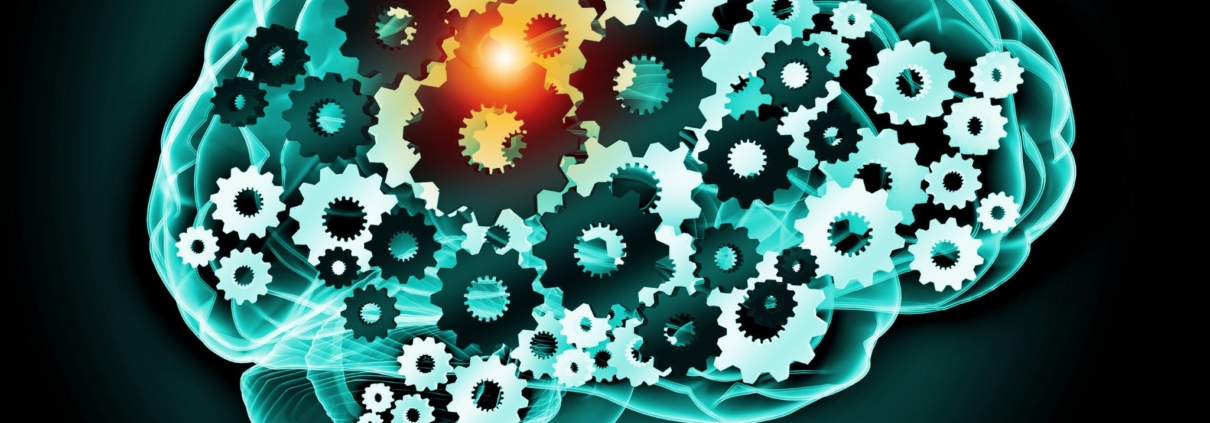Do brain training games really work?
Dr. Joaquin Anguera is an expert in improving cognitive abilities. Earlier in his career, he focused on characterizing and augmenting aspects of cognitive control and skill acquisition using behavioral and neuroimaging technologies. He also created a unique line of research that built upon these domains, with efforts centered on healthy young and older adults, as well as clinical populations involving ADHD, autism, and depressed individuals. Dr. Anguera was among the first to study the efficacy of brain training games on improving cognition, and has authored or co-authored more than 70 peer-reviewed studies on the subject of brain training since 2000. Currently Dr. Anguera serves as associate professor of neurology and psychiatry at the University of California, San Francisco (UCSF), and is a contributor to Neuroscape, a translational neuroscience center at UCSF engaged in technology creation and scientific research to better assess and optimize brain function of both healthy and impaired individuals. In this role, Dr. Anguera leverages state-of-the-art technological approaches to create advanced training tools to remediate cognitive deficiencies, and uses mobile technology (10 apps to date) to characterize individual abilities outside of the laboratory. BrainWise Managing Editor Matt Villano recently sat down with Dr. Anguera to learn more about his work and talk about the efficacy of brain training games overall.
BrainWise: A lot of things you find on the Internet today claim to help people train their brains to be smarter. How does one distinguish between something that is legitimately designed to improve your cognition and something that just claims to do so?
Dr. Joaquin Anguera: I think that’s a great starting point, to say the least. There are a lot of [different exercises] out there, and I think that’s been the case for well over a decade. Some things out there are based on neuroscience, others are not. I have a very cup-half-full point of view. I think a lot of these exercises are probably done with the best intentions, but there’s no evidence behind a lot of them. In many cases, I really look for the peer-reviewed article that shows me a certain quiz does what it claims it does. For me that’s when I know something reaches a certain level of rigor that raises the bar above just a claim, or a design, or whatnot. It doesn’t have to be a phase-three massive clinical trial, which is great if you get the resources as a company or have time to do that. But at least give me something that says this is going that direction, that there’s something behind these findings. That’s how I begin to stratify things.
BrainWise: What’s happening in the brain when someone engages in one of these exercises with the intention of improving cognitive ability?
Dr. Anguera: The way I describe it when I talk about my own work, is that I think about this as going to the gym. With the quizzes we create, we are trying to get you to work out a certain part of the brain that networks with other parts of your brain. Just like your body is all interconnected, well, your brain is too. The way we design games in our crew and our studies is by telling ourselves, ‘Let’s create something that pushes on one specific part, work it out over and over again, with the idea that it’ll strengthen its own abilities and its connections to other areas that might not be working quite as well as you might hope.’ We then build what we call these closed-loop technologies, and we design them to get a little hot or a little colder based upon what the ideal temperature set is. Basically we come up with an ideal sweet spot for someone to work out at and push them a little harder if they’re doing too well, and a little easier of not doing so hot. And we do that over and over again. It’s just like going to the gym.
BrainWise: Tell us a bit more about these closed loops. To what extent have you determined that, with this practice, the brain does get better at performing cognitive tasks?
Dr. Anguera: It seems to work well. But again, it doesn’t always work for everybody in the same way. And that’s where it’s like, let’s all just take a step back and try to think about the experiments. Even the published papers that I’ve done; there are a lot of different reasons it could have worked and a lot of different reasons it could have failed. Often papers are examples of one thing that might have worked in a particular situation. From my perspective, what we try to do in our group at least, is try to do a pretty robust good first pass to show there’s something to what we’re testing. If it doesn’t work, we don’t want to waste anybody’s time; there are other ways we can go about this. We think these digital technologies and games are good ways to leverage accessibility and control the experience in a really tight fashion for someone that may not have the ability to go to a doctor. So we look at it as this is just another tool in the doctor’s toolbelt, which could be really beneficial in conjunction with everything else, but it doesn’t mean it’s going to work for everybody at the same time.
BrainWise: You mentioned brain fatigue. How do you know when you’ve reached that point, both as a researcher in your case and as someone who’s maybe taking one of these tests?
Dr. Anguera: It’s not like when someone – let’s say a teenager – plays ‘Medal of Honor’ or ‘Fortnite,’ and they’re rocking for eight hours. The games that we create, the stuff that I’m involved with, it’s more about how you feel after 30 minutes. You want to put it down and you’re like, ‘I don’t need any more of this.’ You don’t have a headache or anything, you just feel tired. Just like if you did bicep curls for five sets of 50, your bicep would be tired and you’d think, ‘I’d like to do a different body part now.’ In this case, with your brain, you just feel like you’ve done a workout, and you’re ready to do something else and take a break. That’s the biggest difference from playing an entertainment-based game that leverages all these reward-based cycles and excitement versus stuff we do that kind of pushes a very specific neural circuit to work over and over again. It’s a very different experience and your brain knows when it’s tired.
BrainWise: To what extent can gamification make this approach even more successful or useful for those who have found success in leveraging brain games to improve cognition?
Dr. Anguera: It can be super advantageous, and it’s something that we try to do at Neuroscape and in the group that we work with. We have people who help us gamify our stuff to make it a little bit more sticky. We’re not game designers. I’m a scientist. I suck at drawing and art and that kind of stuff, that’s not what my forte is. We know the importance of making an experience that much more fun and engaging, it means that someone’s going to play it that much more and be more adherent to the protocols we come up with. So a company that’s good at doing this, one that makes the experience more fun and sticky and exciting, can only be beneficial in getting people to do what they’re supposed to do. It’s like making your medicine taste good.
BrainWise: Where are the challenges here? Where are the potential pain points with regard to brain training to improve cognition?
Dr. Anguera: There are a few different spots. One of the first is the level of rigor behind all this. There was a wonderful [consensus statement] that came out [in 2014]. The letter basically questioned whether these sort of brain exercises should be going out to seniors. It was signed by 70 something scientists. The letter basically said there wasn’t much evidence to these sort of brain training programs, which was totally fair and completely reasonable. [Editor’s note: In 2016, the debacle ended when the Federal Trade Commission ordered Lumosity to pay $2 million to settle charges of false advertising with regard to its ‘brain training’ program. The New Yorker magazine covered this issue extensively back then, and many of these high-profile platforms essentially have been exposed as fraudulent.]
Another challenge: Not only to show that it works but also explain why it works, so it’s not like a black box or some kind of pulling the curtain over somebody’s eyes. To do that though it requires a lot more resources, a lot more money. If you’re a commercial or industry entity, if you’re an academic repeating a trial with a larger sample size, that’s hard and that requires time. I also try to remind everybody that sometimes what’s beneficial or of interest to me (as a researcher) isn’t always beneficial or of interest to the general public. Here’s what I mean by that. One mom might really want her son to do exercises and improve cognition so he can become an air traffic controller, but if another mom just wants her son to be able to focus or do homework better, those are very two different outcome measures that you test at the end of a study. It all depends upon what you’re looking for. There are lots of wonderful studies that show no effect on the primary outcome measure.
BrainWise: What do brain training games look like two years from now?
Dr. Anguera: I don’t know. I think, hopefully, they become that much more accessible and there’s more behind them. I’m personally really excited about the idea of integrating virtual reality and thinking about how there might be a way to decrease the time needed to be on task and still get the same efficacy. Also, the combination maybe of some neurostimulation along with this I think is really exciting in getting one plus one equals four, or some sort of synergistic effect of building these together. In the next few years, I could easily imagine discovering a way of combining these things, and getting a cocktail effect of getting more bang for your buck like you do when you want to have a better diet. It’s not just one thing, it’s a combination of things. That’s exciting.
BrainWise: Finally, how did you get into this area of expertise?
Dr. Anguera: Dumb luck. My background is actually in kinesiology and new skill acquisition doing simple motor tasks. Almost 15 years ago, when I was looking for a postdoc, I found [neuroscientist, writer, and Founding Director of Neuroscape] Adam Gazzaley on a Google search, we connected, and he was like, ‘Hey, can you apply some of those principles of skill acquisition and motor learning to cognitive training? I told him I thought it was a terrible idea, and he was like, ‘No, no, no, let’s try it.’ He wore me down, frankly, and convinced me this would be a fun thing to do, given my ability to use joysticks and things for motor learning. Here I am almost 15 years later. Guess that means he was right.
This essay has been factchecked by members of NAN’s Publications Committee. For more about that process, click here.









